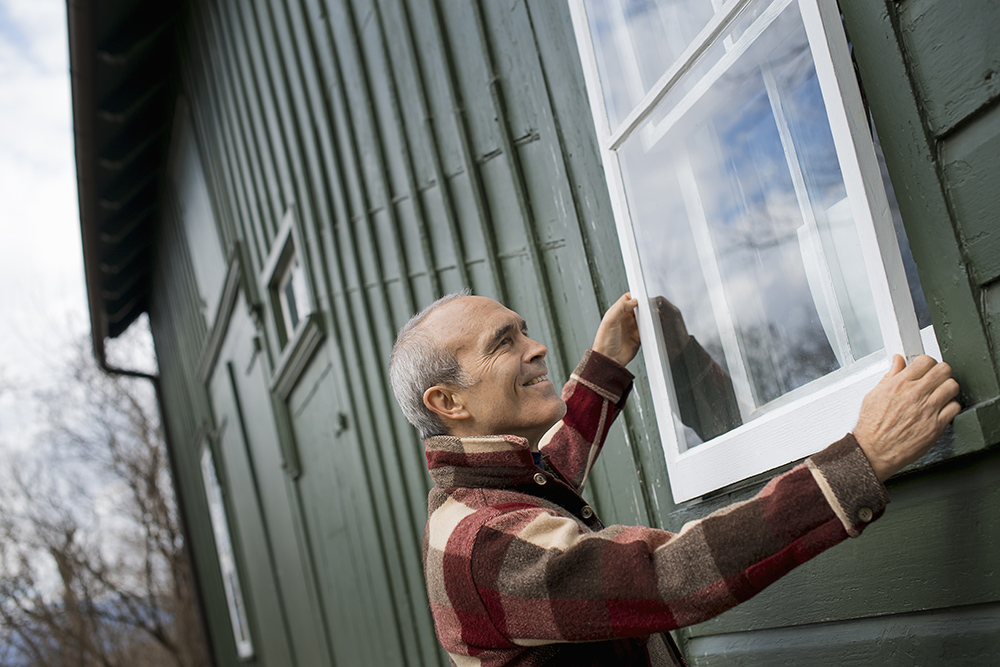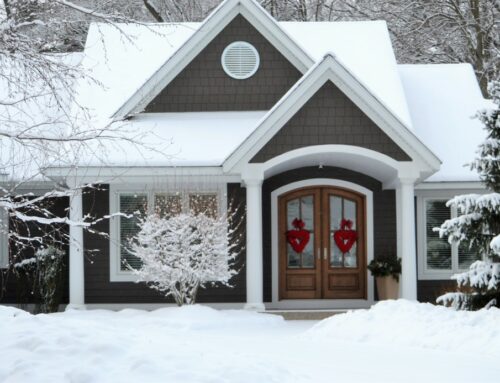It’s that time of year again – winter is coming! And with it, the potential for hazardous weather conditions that can damage your home. From heavy snow and ice to high winds, your home is vulnerable to various weather-related threats.
That’s why it’s essential to take the time to winterize your property correctly.
This blog post will provide you with a comprehensive checklist of things you need to do to protect your home from the cold winter weather. Follow these tips, and you’ll be able to rest easy knowing your property is well-protected this season!
What is Winterization?
The winter season can take a toll on your home, inside and out.
Winterization is the process of preparing your home for the winter months. During this time, it will be exposed to colder temperatures, higher winds, and potentially heavy snowfall or ice accumulation.
By taking some simple steps now, you can help to protect your home from the potential damage that winter weather can cause.
Plus, winterizing your home can also help improve its energy efficiency, saving you money on your energy bills throughout the season!
So, what exactly do you need to do to winterize your home? Read on for our complete checklist.
10 Steps to Winterize Your Home
The cold weather of winter can do some serious damage to your home if you’re not careful.
Winter elements such as snow, ice, and high winds can cause everything from leaks and flooding to broken windows and damaged roofs.
That’s why it’s essential to take the time to winterize your property before the season hits in full force.
Not sure where to start? Use this checklist as a guide:
1. Inspect Your Heating System
When the cold air starts to creep in, you’ll want to make sure your heating system is up and running and able to keep your home warm all winter long.
Start by scheduling a professional inspection of your furnace or other heating systems.
This will help to ensure that it’s in good working condition and doesn’t pose any safety hazards.
You can also try turning on your heat for a few minutes to ensure it’s working correctly. Cleaning air filters and vents can also help improve your system’s efficiency.
2. Move Your Outdoor Furniture Inside
If you have any outdoor furniture or decorations, now is the time to move them inside.
Not only will this help to protect them from the winter weather, but it will also free up some extra space in your yard.
Just be sure to clean them before bringing them into your home – no one wants to track in mud and leaves!
You can also use this opportunity to declutter your yard and eliminate unwanted items. This will make it easier to keep your property clean and tidy all winter long.
Plus, it will give you a head start on your spring cleaning!
3. Check Windows and Doors for Air Leaks
One of the most common ways warm air escapes homes is through leaky windows and doors.
Take the time to check all of your windows and doors for any gaps or cracks. If you find any, seal them up with weatherstripping or caulking. It will keep the warm air in and the cold air out!
You should also make sure that your windows are properly insulated. This reduces heat loss and keeps your home nice and cozy all winter.
If you have any old or drafty windows, now is an excellent time to consider replacing them with more energy-efficient models.
Just be sure to research and find windows that will work well for your home.
4. Cover Your Air Conditioner
Did you know that your air conditioner must also be protected from winter weather?
When temperatures drop, it’s essential to cover your air conditioner unit with a tarp or other waterproof material.
This will help protect it from snow and ice accumulation, damaging the unit and reducing its efficiency.
You should also disconnect and drain any hoses attached to your air conditioner. This will prevent them from freezing and bursting in the cold weather.
Once you’ve taken these steps, it’s a good idea to have your air conditioner serviced by a professional to ensure it’s in good working condition.
This way, you’ll be all set when the warmer weather arrives!
5. Expel Water From Your Sprinkler System
Your sprinkler system needs to be properly winterized to prevent any damage from freezing temperatures.
First, turn off the water supply to your sprinkler system and drain the remaining water from the pipes.
Once you’ve finished that, remove any hoses connected to your system and put them inside for the winter. This will stop them from freezing and breaking in low temperatures.
6. Try To Lower Your Water Heater Temperature
Energy costs can be high during winter, so reducing energy consumption is essential.
One way you can do this is by lowering the temperature of your water heater.
You don’t need to have boiling hot water in the middle of winter – just a few degrees lower can make a big difference! Your heating bill will thank you.
Of course, you should always make sure that your water heater is set to a safe temperature.
7. Inspect Your Pipes
Your attic, basement, and crawl spaces are all susceptible to freezing temperatures in the winter.
To prevent your pipes from freezing (potentially bursting), take a walk around your property and check for any drafts or leaks.
You can also insulate them by wrapping them up with electrical heating tape and adding foam pipe insulation.
Just be sure to do this carefully and follow all safety instructions – you don’t want to cause any accidents! Remember to insulate any exposed piping in your homes, such as those in your basement or crawl space.
8. Paint a Fresh Coat of Sealing Paint on Your Deck
Your deck is one of the most critical parts of your home, so it’s essential to take steps to protect it from the winter weather.
One way you can do this is by painting a fresh coat of sealing paint on your deck. This will help to prevent any moisture damage and keep your deck looking great for years to come.
You can also put a layer of mulch or straw around your deck to help insulate it from the cold. Remove any debris or leaves before they have a chance to freeze and cause damage.
9. Replace Screen Windows and Doors with Storm Panels
Screen windows are not precisely made to withstand strong winter winds and snow.
To protect your home from the elements, replacing screen windows and doors with storm panels is a good idea.
Storm panels are made of heavy-duty materials that can stand up to high winds and flying debris. They’re also much more effective at keeping out cold air and heat.
Installing storm panels is a bit of a project, but it’s worth it for the peace of mind it provides.
Plus, you’ll be able to enjoy your winter view without worrying about the wind and snow!
10. Check Carbon Monoxide Leaks
Carbon monoxide is a colorless, odorless gas that can be very dangerous.
That’s why it’s vital to have carbon monoxide detectors in your home and to check for leaks regularly.
If you think there may be a leak, open all the doors and windows to ventilate the area and then call a professional to come and check it out.
Don’t take any chances with carbon monoxide – it’s not worth the risk!
Conclusion
The winter months can be tough on your home.
But if you take the time to prepare and winterize your property, you can rest assured knowing that it will be protected from the worst weather.
By following the tips on this checklist, you’ll be well on your way to keeping your home in tip-top shape all winter!
Do you have any other tips for winterizing your home? Share them with us in the comments below!


